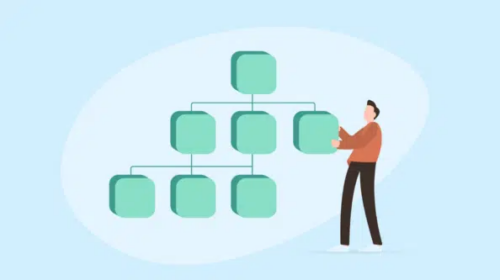Keyword Classification: Understanding The “Why” Of SEO
Keyword classification is often the missing ingredient in SEO plans. Without understanding the reasons why people search, search engine optimizers will often misinterpret or improperly classify keyword phrases. How do we understand the “why” part of the optimization process?
As search engine optimizers, we want to know as much as possible about our target audience so we can deliver the best search experience. To accomplish this, we address the following questions:
Without understanding the reasons why people search, SEO professionals will often misinterpret or improperly classify keyword phrases.
- What are people searching for? (keywords/labels, file type)
- Where are people conducting their searches? (location)
- When are people conducting searches? (date, time)
- Who is using the commercial web search engines? (target audience)
- How are people searching? (desktop/tablet/mobile, query/browse/ask)
- Why are people conducting searches? (goals, intention, motivation)
Keyword research tools, web analytics data, advertising data, and other resources provide us with some answers. However, for our conclusions to be accurate, we should also understand the data and resources in context.
For example, keyword research tools can tell us what people are searching for and the order in which searchers type in keywords. But keyword research tools do not provide a lot of context about each keyword phrase. Therefore, savvy search engine optimizers know that they must use other means to understand searcher context.
Common Mistakes In Query Classification
When it comes to keyword classification, I often observe SEO professionals place their mental models onto keywords without (a) understanding searcher context, and (b) understanding query classification.
Here are some examples.
Scenario #1
Web searcher Bob is about to vacation in Hawaii. He wants to check the balance of his frequent flyer miles. Is Bob’s intent navigational, informational, or transactional?
Many people answer this question incorrectly because they believe that the word “check” indicates transactional intent. However, in order for a person to check the amount of his frequent flyer miles online, he must go to a specific website and log in.
Even though the final intent is to do online activities (log in and look up frequent flyer miles), the essential step before these activities is to go to a specific website. Therefore, the query (keyword) classification is navigational.
Scenario #2
Searcher Natalie conducts a Web search for headphones. Does this keyword communicate navigational, informational, or transactional intent? Explain your answer.
All too often, the immediate and natural thought process is like this: “If I typed in the word headphones into Google, what does it mean?”
The problem with this way of thinking is simple. The second you think about what you would do and why you would do it, you are placing your personal mental model onto the searcher. The idea behind query classification is to understand searcher context, not your context.
So how would I answer this question? Here is my analysis:
(1) Ad hoc query
My initial thought when I saw this query? I thought it was an informational query, more specifically an ad hoc query. With an ad hoc search, the searcher’s goal is to find as many relevant documents as possible about available headphones, a “fishing expedition.
Headphones is a single word. Natalie did not mention brand, type, or any other qualifier word. This single-word query also leads me to believe that this is an ad hoc search.
(2) Transactional intent not specified
Natalie might want to purchase headphones eventually, but the single keyword does not specify whether or not she wishes to make the purchase online or in a physical store.
Transactional queries are ones where the searcher wishes to perform some Web-mediated activity. Since Natalie did not specify whether or not she wanted to purchase headphones online, this makes the keyword query seem less transactional.
Even if Natalie eventually planned on purchasing headphones, she might want to find out about the different types of headphones (over-the-ear, wireless, earbuds, etc.) and compare prices.
So before Natalie decides to purchase, she is finding out information about headphones before an actual online or offline transaction.
(3) Plural = possible list
When a searcher types in the plural form of a keyword, it is an indication that he or she wants to see a list of items. When a searcher wants to view a list of items, it shows informational intent.
Headphones is a word that can indicate singular or plural.
Therefore, I concluded that the keyword headphones is an informational query that might lead to an online or offline transaction – keeping in mind that the online or offline transaction might not be an immediate need or desire.
Granted, these are just my interpretations of the keywords. Had I observed Bob or Natalie in their natural search environments, I could determine more easily their searcher goals.
Card Sorting Analogy
As a website usability professional, I am fortunate to observe people in their natural search environments. Furthermore, I get to conduct usability tests with keywords. Many of my SEO insights are a result of ongoing usability testing.
One usability test I use to determine searcher mental models about keywords is a card sort test. (Please see When Good SEO Becomes Bad Information Architecture for info on the different types of card sort tests.) Card sort tests can also help SEO professionals determine the best labels when optimizing web documents.
I recently attended a webinar presented by information architect and card-sorting guru Donna Spencer entitled Designing Usable Categories with Card Sorting. I discovered that Donna and I have the same experience with keywords and user mental models.
Card sort tests can be conducted online and offline (usually face-to-face). In her webinar, Donna explained some of the differences between a face-to-face card sort test and an online card sort test. Sometimes, Donna conducts face-to-face card sort tests in groups of three. The value of group testing is listening to participants talk through what they think.
She could observe:
- Where test participants really disagreed
- How test participants resolved the labeling dispute (if it were resolved)
- The words that participants did not write on a sticky note or an index card
In other words, she often hears why test participants had an easy or difficult time determining a category label…something she might not experience by conducting the same test online.
When I observe users/searchers in their natural search environments and during usability tests, I often learn information that I do not get from keyword research tools.
For example, recently, I discovered that if I architected a website based on keyword research data, I would have completely missed the users’ mental models.
The keyword research data showed that the vast majority of search queries were by type. But all test participants mentioned their personal status (single or family) during the usability test. Consumers didn’t know the jargon for different types of services.
So for this company’s website, the primary way of organizing information was by target audience, not by type. Because of this, I modified the primary navigation and relevant page interlinking on the website.
I did not discount the keyword research data. I just used the keywords in the right context.
To me, search engine optimization is optimizing a website for people who use search engines. Understanding searchers, their contexts and environments, behaviors, and intentions is just as important as understanding how search engines work.
In my opinion, if SEOs are optimizing websites without considering query classification and searcher personas, then they are optimizing more for search engines than for searchers (technology-centered optimization). Keyword classification is crucial for long-term search engine visibility and conversions.
Is query classification a part of your SEO plan?






